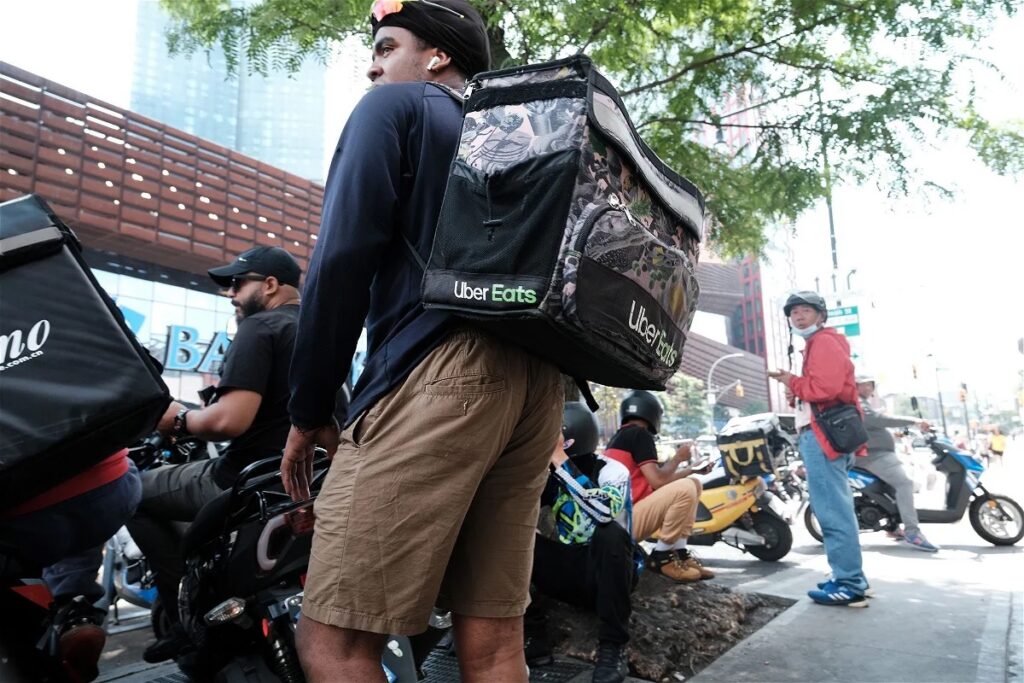
Much attention has been drawn to the growing gig economy and its implications for the broader labor market. However the plight of gig workers is often framed in a way that does not treat them with the same consideration as other workers that are directly employed.
While colloquially the term gig workers bring up images of food delivery and rideshare workers, gig work as defined by the Federal Reserve and BLS is simply work that is recorded for income that is variable and temporary, which includes the aforementioned drivers and delivery but also anybody doing short term rentals, selling products online, cleaning homes, independent contractors, and other freelance work. Gig work is very diverse and it is important to understand which section we want to focus on. Today, the discussions around gig work and its implications largely revolve around the people providing services for apps like Doordash and Uber.
Some argue that gig work is a safety net, offering flexible employment for the unemployed while reducing the amount of people claiming unemployment benefits. This idea is a moderate expression of the underlying popular sentiment that gig work isn’t “real” work but something for people to fall back on. Since gig workers do not count as employees, they are ineligible to claim government benefits such as unemployment insurance that are crucial parts of the safety net. To remedy this, unemployment insurance laws should be expanded to include gig workers, or there should be conditions to classify gig workers as employees.
During the pandemic, unemployment insurance was expanded to cover gig workers. In 2020, a massive temporary expansion in unemployment insurance was introduced: Pandemic Unemployment Assistance (PUA). This increased unemployment benefits and made previously ineligible groups — including gig workers — eligible for benefits. Losing a significant chunk of previously reported self employed income made you eligible to cover a significant decline in business as a contractor, as with Uber’s sharp decline in ridership. The definitional and bureaucratic capability is now there. It’s important to note that like with unemployment benefits for most workers now, simply being out of work is not enough for you to qualify. The cessation of expanded benefits and eligibility did not lead to a significant increase in labor force participation, as opponents claimed. Therefore, there is little reason to be wary of expanding eligibility to gig workers using the PUA as our guide.
Last year, Biden’s Department of Labor proposed a redefinition of the guidelines distinguishing contractors and employees to potentially include gig workers so they could be eligible for benefits and protections. According to the proposal, what distinguishes employees from contractors is the extent to which the worker gets to control aspects of their own work, such as hours, whether they can work for multiple employers at once or being able to reject employer demands. This means that independent contractors who reap the benefits of being contractors stay as contractors, but a company treating its contractors like employees has to decide between giving them the benefits employees are entitled to or the flexibility contractors are entitled to. This creates an explicit choice for employers.
Most of the objections to this proposal misrepresent what reclassifying workers would actually entail. For example, this opinion article criticizing the proposal cites a study analyzing the consequence of applying the ABC test for distinguishing workers and contractors federally. However, the current proposal is intentionally meant to be less heavy handed than the ABC test and “mirrors legal guidance issued by the Obama administration,” removed under the Trump administration. This is even affirmed by Uber’s head of federal affairs CR Wooters: “Today’s proposed rule takes a measured approach, essentially returning us to the Obama era, during which our industry grew exponentially.”

